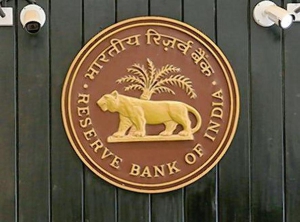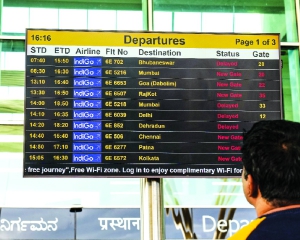On April 26, 1920, the nation lost Srinivasa Ramanujan a rare mathematical genius. His mathematical consciousness illuminated the world for eternity. This is not merely his death anniversary; it is a celebration of a saint — like devotee of numbers who elevated mathematics to the realms of philosophy and the divine
When numbers resonate and equations seem to dance with the soul, one name echoes through the very fabric of creation — Srinivasa Ramanujan. On April 26, 1920, a dark day in Indian history, the nation lost this priceless gem.
Yet, in that moment, his mathematical consciousness illuminated the world for eternity. This is not merely a death anniversary; it is a celebration of a saint-like devotee of numbers who elevated mathematics to the realms of poetry, philosophy, and divine connection. Ramanujan was no ordinary mathematician — he was a mystic of numbers, a seeker of hidden truths, a visionary who saw the universe through the lens of infinite equations.
His story is a spark that turns the impossible into the possible. Born on December 22, 1887, in the small town of Erode, Tamil Nadu, Ramanujan’s life was nothing short of a modern fairy tale. Raised in a humble Brahmin household, surrounded by financial hardships and lacking formal education, he faced walls that would deter most.
But his genius was a relentless wave that shattered every barrier. From a young age, numbers were his companions and his playground. While other children played with toys, he delved deep into the mysteries of mathematics.
School textbooks quickly proved inadequate, and he began exploring advanced mathematical concepts on his own. At the age of 15, he discovered A Synopsis of Elementary Results in Pure Mathematics by GS Carr — a book that became his sacred scripture. It fuelled his imagination and transformed his notebooks into treasure troves of original formulas and theorems.
To Ramanujan, mathematics wasn’t just about calculations — it was a spiritual quest. He often credited his insights to his family deity, Goddess Namagiri, saying, “Every formula that comes to my mind is by the grace of the Goddess.†To him, mathematics and divinity were two expressions of the same truth. His work — be it infinite series, continued fractions, or partition functions — read like verses of a cosmic poem.
His formulas for calculating p are so elegant and precise that they are still used by modern supercomputers. His partition function transformed number theory, and his discoveries in theta functions and modular equations have found applications in cryptography, physics, and even black hole theory. The world took notice of his genius in 1913, when he sent a letter filled with groundbreaking formulas to the eminent Cambridge mathematician GH Hardy.
Initially sceptical, Hardy was soon astonished. Upon meeting Ramanujan, he said, “Ramanujan’s mathematics is beyond the human mind; it is divine inspiration.†Ramanujan was invited to Cambridge, and his collaboration with Hardy sparked a revolution in mathematics. The Hardy — Ramanujan formula on the distribution of prime numbers, along with their other contributions, are considered monumental achievements.
Ramanujan’s greatest legacy lies in his notebooks — thousands of formulas, many without proofs, that took mathematicians decades to fully understand.
His mock theta functions, penned during his final days, baffled mathematicians for nearly a century but are now essential in quantum physics and string theory.
His contributions to the Riemann zeta function continue to influence research on one of mathematics’ most profound mysteries — the Riemann Hypothesis.
Yet, Ramanujan’s journey was not without immense struggle. At Cambridge, he battled cultural isolation, dietary challenges, and the harsh English climate. Diagnosed with tuberculosis in 1917, his health deteriorated, and he returned to India in 1919.
Just a year later, on April 26, 1920, at the age of 32, he passed away in Kumbakonam. But though his mortal life ended, his spirit lives on through his work.
The discovery of his “Lost Notebook†in 1976 reignited excitement and opened new doors in mathematical research. Ramanujan’s influence goes far beyond mathematics. His story is a beacon for dreamers and doers who dare to rise above adversity. In 1987, India marked his birth centenary by declaring it National Mathematics Year. His legacy continues in the world’s top institutions, and his life inspired Robert Kanigel’s biography The Man Who Knew Infinity, later adapted into a global film.
In his honour, December 22 is now celebrated as National Mathematics Day in India. Ramanujan’s life is proof that genius needs no degree, wealth, or privilege. His journey is a testament to passion, faith, and the boundless potential of the human mind. His discoveries not only advanced science but also revealed a deep philosophical truth — that within each of us lies the power to touch the infinite.
Today, as we remember him on April 26, we do more than pay tribute — we renew our commitment to nurturing the spark within us. Like Ramanujan, may we turn our dreams into devotion. Equations may evolve and theorems may change, but there will never be another Ramanujan.
He is the eternal lamp in the temple of mathematics — forever radiant. His legacy is not India’s alone — it belongs to all of humanity. As long as numbers are written and equations are solved, Ramanujan will remain immortal — a soul who touched infinity and offered its light to the world.
Srinivasa Ramanujan was not just a mathematician — he was a visionary who transformed numbers into a divine language. On April 26, we don’t just mourn his passing; we celebrate a life that elevated mathematics into art, spirituality, and cosmic truth.
Despite humble beginnings and relentless hardships, his passion and genius blazed trails that continue to shape modern science.
His discoveries — ranging from infinite series to mock theta functions — remain cornerstones of mathematics, physics, and beyond. Ramanujan’s journey proves that brilliance needs neither privilege nor pedigree.
His life is a testament to what the human spirit can achieve with faith, curiosity, and devotion. Today, his legacy lights the path for dreamers, thinkers, and seekers of truth across the world. As we remember him, we also honour the infinite potential within us all.
Ramanujan lives on, not just in equations, but in the eternal quest for knowledge he so passionately embodied. He is, and always will be, mathematics’ guiding flame.
(The writer is a columnist and a blogger. Views are personal)


























